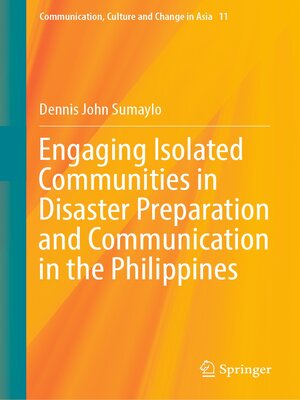Engaging Isolated Communities in Disaster Preparation and Communication in the Philippines
ebook ∣ Communication, Culture and Change in Asia
By Dennis John Sumaylo

Sign up to save your library
With an OverDrive account, you can save your favorite libraries for at-a-glance information about availability. Find out more about OverDrive accounts.
Find this title in Libby, the library reading app by OverDrive.



Search for a digital library with this title
Title found at these libraries:
| Loading... |
This book provides an account of how local government units in the Philippines engage marginalized and geographically isolated communities in taking part in pre-disaster communication efforts. The book focuses on communities classified by the government as Geographically Isolated and Disadvantaged Areas (GIDA) on the culturally rich island of Mindanao, Philippines. The focus is centered on GIDA communities because they are assumed to receive less information and help in relation to their circumstances. This book accounts for the disaster preparedness communicative conditions of people living in GIDAS and identifies synergies and tensions in the engagement process. As such, specific branches of enquiry focus on how information-seeking and sharing experiences of GIDA communities inform the current practice of community engagement. In taking this research approach, this book deliberately gives voice to these marginalized and often silenced communities. In general, the study examines otherpossibilities (or variables) in the pre-disaster risk communication process that truly engage geographically isolated and socioeconomically disadvantaged communities in disaster risk reduction and management (DRRM). Considering the existing methodologies used to engage local communities in DRRM, this book looks at ways in which bottom-up and top-down approaches could be melded together for a transformational level of engagement in these communities. The novelty of addressing issues concerning geographically isolated communities in a developing country is a research track worthy of being investigated by academics. The book is of interest to students and in development communication and disaster risk communication as well as community engagement practitioners specializing in DRRM. The framework proposed in this book for engaging isolated communities is helpful to practitioners in designing, planning, and implementing pre-disaster communication and community engagement programs.






